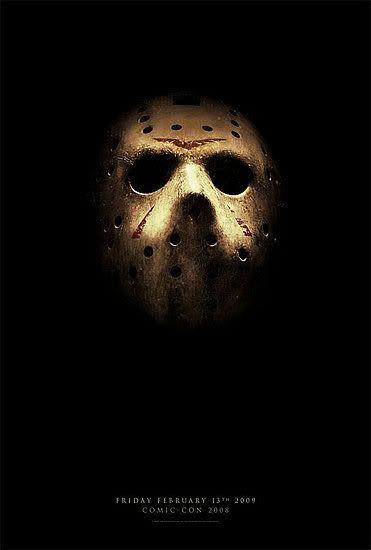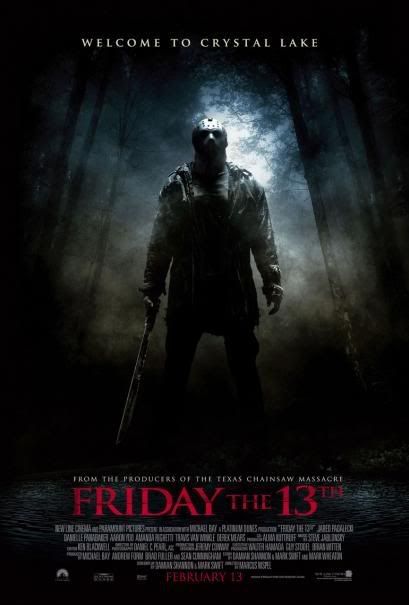Nearly 30 years after its original 1980 release, Friday the 13th remains one of the most seminal and influential horror films of modern times. While John Carpenter's classic Halloween (1978) set the template for what has become invariably known as the 'splatter' or 'slasher' film, the genre did not really explode until Friday the 13th’s surprise success at the box-office (the years immediately following its release saw a rash of similar themed films such as Prom Night, He Knows You're Alone, The Prowler and Alone in the Dark dominate the independent horror cinema scene).
Originally conceived as a low-budget, exploitation potboiler that was bound for a short run at drive-ins and grindhouse cinemas, producer/director Sean S Cunningham hit paydirt when Friday the 13th was picked up for distribution by Paramount, who dumped the film into thousands of mall cinemas across America, giving the movie a level of exposure that the filmmakers would never even have imagined during production.
The status which the Friday the 13th films have established for themselves in modern pop cinema is puzzling to most, including an admitted fan like myself. While Halloween exuded a genuine sense of mood and atmosphere, and directorial flair, and Wes Craven’s A Nightmare on Elm Street (1984) explored some interesting themes regarding the power of dreams and their effect on the psyche, the Friday the 13th movies are little more than disposable junk. Entertaining junk certainly, but completely superficial, with little artistic flair (save for the creative make-up effects) or intellectual depth, and working purely on a cathartic level. The fact that they are still producing Friday the 13th movies three decades after their inception is a testament to not only the longevity of Jason Voorhees – the iconic central character of the series – but of the timeless allure of fiction and fantasy which plays upon our primal fears.
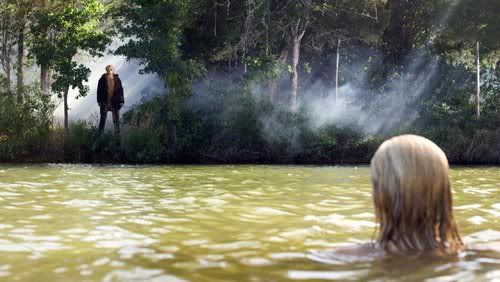
After eleven movies where he’s been chopped up, burned, axed in the head, drowned, re-animated as a rotting zombie, shot spears at the audience in 3D, invaded Manhattan, spent time in Hell, pitted against a psychic and gone mano e mano with Freddy Krueger, Jason Voorhees now finds himself victim to Hollywood’s latest horror curse: the remake.
Directed by German born Marcus Nispel (who also helmed the 2003 remake of The Texas Chainsaw Massacre), this Friday the 13th tries to broaden its appeal by being both a remake and pseudo-sequel. Because it wasn’t Jason Voorhees, rather his mother, who did all the killing in the original film, a literal remake would not have been a wise commercial move. Thus, the first twenty minutes of the film take care of the remake portion, recapping the story of Camp Crystal Lake, a summer camp for kids which becomes cursed after the mongoloid (can we still use that term in these PC times?) child Jason Voorhees seemingly drowns in the lake. Blaming the inattentive (and oversexed) teenage counsellors for her son’s death, Jason’s mother goes on a killing spree across the camp, dispatching the counsellors one by one until she in turn is beheaded. Years later, Jason turns out to be very much alive and out for vengeance against the world, picking off a group of young adults who venture into his picturesque wooded domain in search of a rumoured cannabis crop (a plot point which has had some conspiracy theorist fans in the US claiming that Jason is really a drug harvester who’s simply protecting his stash!). The plight of a second (and much more annoying) group of young intruders provides Jason with the bulk of his exercise and entertainment.
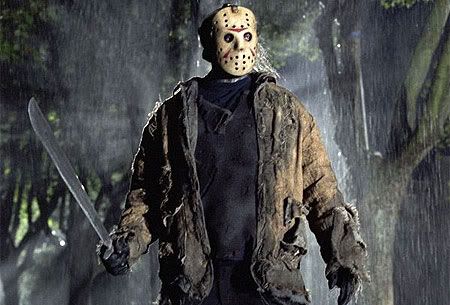
There's really nothing new to be found in this Friday the 13th reboot. The characters are just as clichéd, obnoxious and idiotic as always (and thankfully so, as it would be a lot tougher to watch characters you cared about being the victims of wholesale slaughter). However, one thing that is new is the level of brutality and viciousness on display, which is in keeping with the recent trend in horror movies, as witnessed in films such as the Saw and Hostel series’, and in the works of Rob Zombie (House of 1,000 Corpses, The Devil’s Rejects, the Halloween remake). In previous Friday the 13th movies, Jason was depicted as very instinctual and shark like, doing simply what he needs to do with cool and calculated precision. His victims died horribly, but at least they died relatively quick. Here, we get more of a sense that Jason actually revels in and gains pleasure from his killings. We also get to see where Jason hides from the world, and where he stashes his collection of mementos from his kills (something never really touched upon in previous films).
Despite its overall familiarity, there are some definite highlights to be found here. The opening twenty minute sequence is great – compact and taut, and presented on a slicker and more grander scale that what we have seen before. The rest of the film never really lives up to it, but there are enough good scares peppered throughout it to make it worth the journey. The film looks great (and nice to see they have used original Texas Chainsaw Massacre lenser Daniel Pearl as cinematographer). More advantage is taken of the naturally foreboding elements of the woods at night, and there are some nice references to the older films, such as Jason’s original sack mask (as seen in Friday the 13th Part 2), and the obtaining of his now famous hockey mask (actually given a different origin here than in Part 3). The film also benefits from a moody score by Steve Jablonsky (although the awful rap tracks I could have done without).
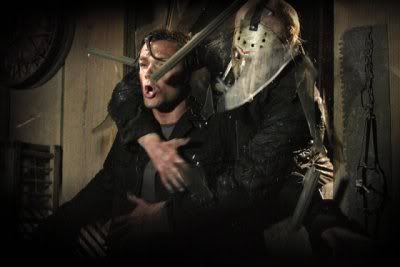
If you hated the movies that came before it, this is not likely to change your opinion one bit. Die-hards will nitpick it, but should also realise that what they got was a pretty good addition to the series, certainly the best film since 1984’s Friday the 13th Part 4: The Final Chapter). Undemanding fans who like their horror movies simple and bloody should lap it up and devour it.
At the American box-office, Friday the 13th has already taken more money than any other film in the series save for 2003’s Freddy Vs. Jason (which obviously benefited from having two horror icons as its focus). When they first started churning out the sequels, I remember reading (probably in the pages of Fangoria) that the producers’ ultimate goal was to produce a fitting total of thirteen films in the series. But considering the way people are still turning out in droves to see Jason Voorhees do his thing, I’m sure they’ve got no intention of stopping there...
Copyright John Harrison 2009
